Oil:
- Despite the fact that the nuclear agreement has not yet been signed, Iran is increasing its oil production
- Production is already 0.6 million bpd higher compared to last year's low. Expectations point to an increase of up to 1 million bpd this year, which will significantly reduce the growth potential on the crude oil market, or at least limit the scenario in which the price of crude oil would be close to $100 per barrel
- Negotiations on the nuclear deal are expected to resume on May 25, despite the end of the period of supervision of Iran's nuclear infrastructure by a special UN unit (the end of this period led to a rebound in prices amid uncertainty about a potential deal)
- US jet fuel consumption has returned to around 80% of its normal pre-pandemic levels
- The demand for gasoline is expected to increase. Currently, the demand for gasoline is approx. 260k bpd lower than "normal", but an increase of even 500-600 bpd is expected during the summer season
- Inventories in the United States returned to the 5-year average, which suggests that the current commodity prices will remain at the current levels
- Goldman Sachs continues to see a continuation of the uptrend, despite the high threat of increased supply from Iran. GS expects oil prices to reach $80 a barrel by October this year
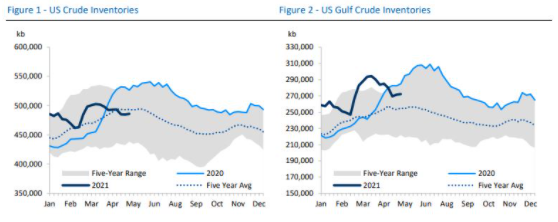 US crude oil inventories fell below the 5-year average. Source: RBC Capital Markets
US crude oil inventories fell below the 5-year average. Source: RBC Capital Markets
Start investing today or test a free demo
Create account Try a demo Download mobile app Download mobile app WTI crude (OIL.WTI) price is again approaching local highs. Important resistance can be found around $ 65-67 a barrel and is marked with local peaks from 2019 and 2020. Should a break higher occur, then another strong resistance lies around $ 75 a barrel. Such a price would push the Brent price to approximately $80 a barrel. Source: xStation5
WTI crude (OIL.WTI) price is again approaching local highs. Important resistance can be found around $ 65-67 a barrel and is marked with local peaks from 2019 and 2020. Should a break higher occur, then another strong resistance lies around $ 75 a barrel. Such a price would push the Brent price to approximately $80 a barrel. Source: xStation5
Aluminum:
- The Development and Reform Commission (NDRC) in China led to a deeper correction on some raw materials, including aluminum
- The Commission has indicated that it intends to limit abnormal price fluctuations in key markets such as iron ore, copper, aluminum, corn and soybeans
- China will monitor whether there have been any excessive purchases (for example, to store them and wait for a higher price). According to China, the current high prices of many commodities are the result of speculation on the domestic markets
- The LME points out that the high prices in the aluminum market are also caused by the recent electricity shortage in China's smelters, which has lowered production in the country
- Demand for industrial metals is expected to increase as economies open up
- A further decline in aluminum inventories in LME warehouses has recently been observed. The same goes for zinc, nickel and tin. On the other hand, copper inventories are increasing, although only marginally compared to changes in the inventories of other metals
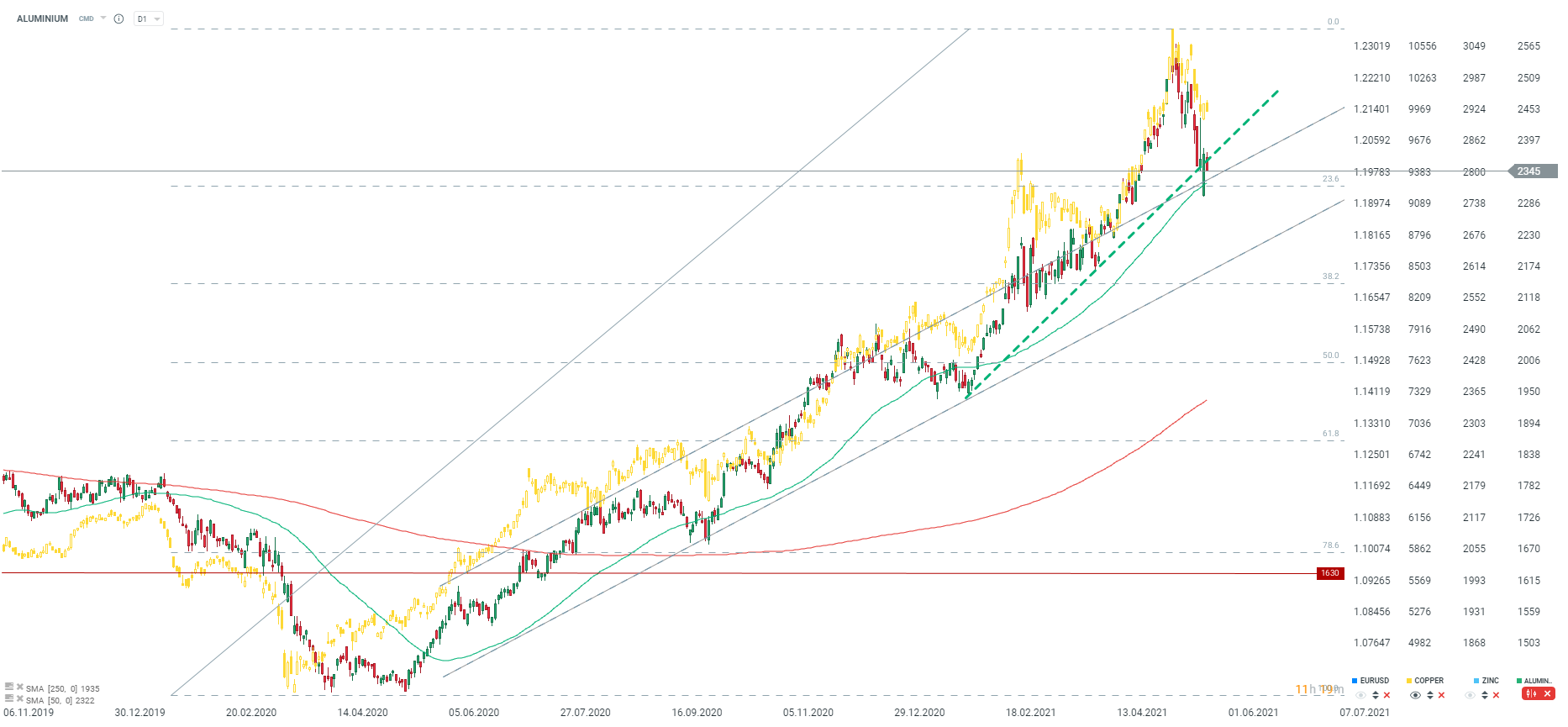 The price of aluminum is backed by the 23.6 Fibonacci retracement, which in turn coincides with the upper limit of the upward trend channel and the 50-period average. On the other hand, the upward trend line was breached recently. If the aforementioned support is breached, the next for sellers is located around $2,200- $ 2,250 per ton. In turn, the bulls may regain the initiative only when the price breaks above$ 2370 level. Source: xStation5
The price of aluminum is backed by the 23.6 Fibonacci retracement, which in turn coincides with the upper limit of the upward trend channel and the 50-period average. On the other hand, the upward trend line was breached recently. If the aforementioned support is breached, the next for sellers is located around $2,200- $ 2,250 per ton. In turn, the bulls may regain the initiative only when the price breaks above$ 2370 level. Source: xStation5
Gold:
- The strong sell-off in the cryptocurrency market has led to an increase in the demand for gold
- ETFs are increasing net positions in the gold market again
- Weak dollar and lower bond yields support the current gold valuation, although in the short term there is still divergence between gold and TNOTE
- The $ 1,890 / ounce level remains a very strong resistance
- Recent comments on the possible tapering of the QE program in the US did not hurt the markets. The recent reverse repo auction shows that the market is still flooded with a huge amount of money
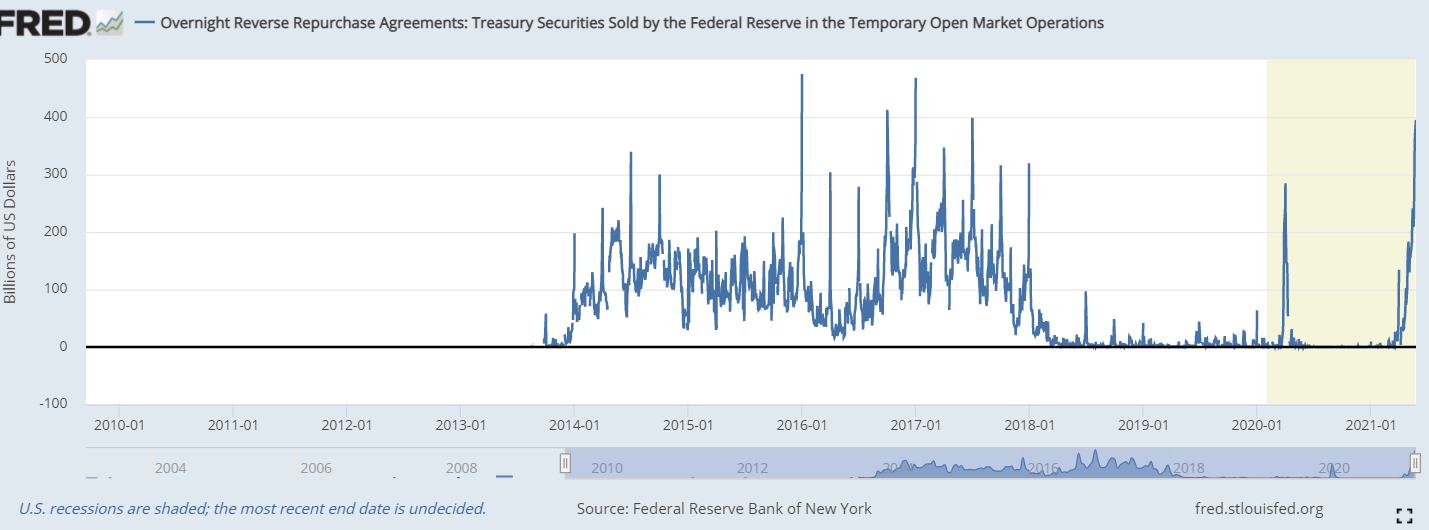 The market is flooded with money, which of course could mean more inflation. Nevertheless, more money favors a cheaper dollar, which should have a positive effect on prices, at least in the short term. Source: FRED
The market is flooded with money, which of course could mean more inflation. Nevertheless, more money favors a cheaper dollar, which should have a positive effect on prices, at least in the short term. Source: FRED
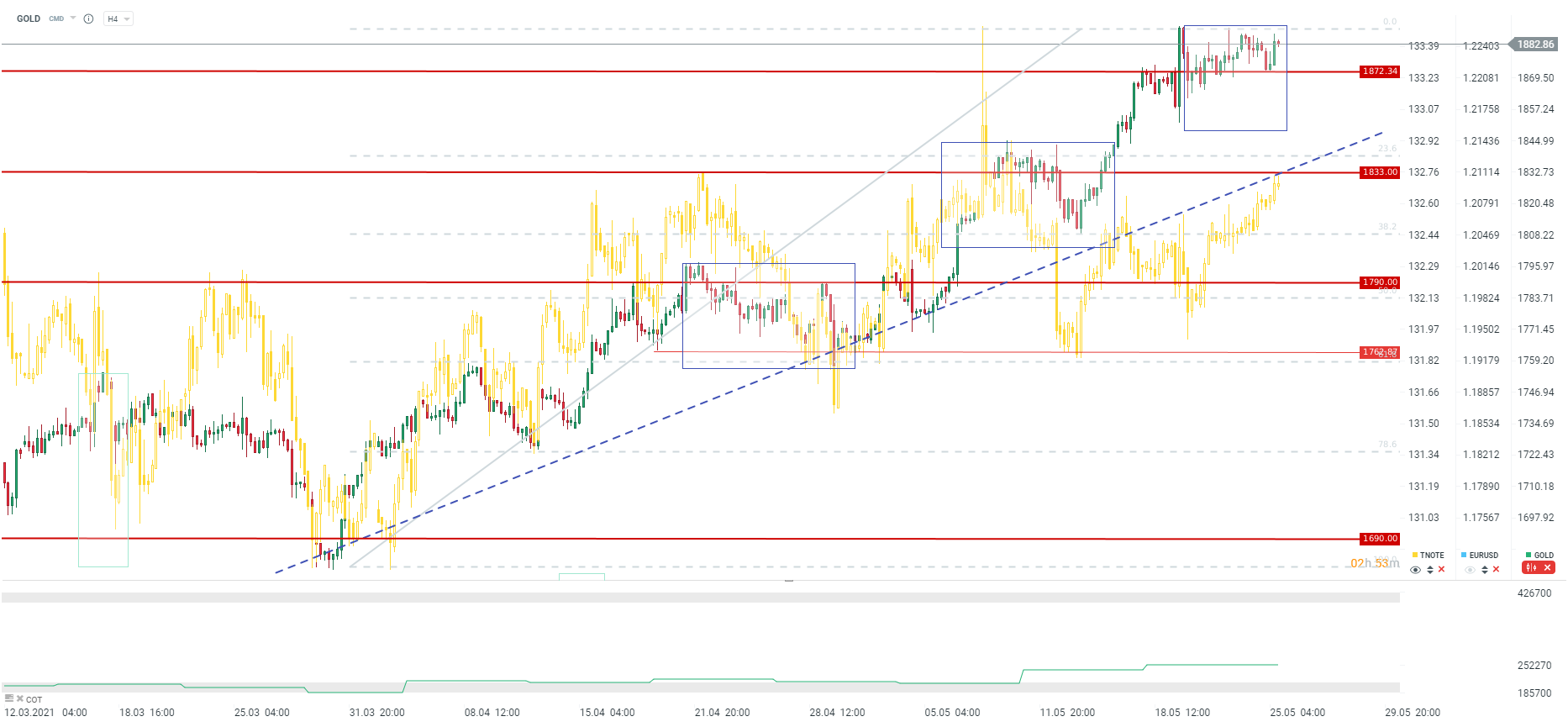 Gold consolidates below $ 1,890 per ounce. The most important support is located around $1850 per ounce and is marked with the lower limit of the overbalance structure and 23.6 Fibonacci retracement. Source: xStation5
Gold consolidates below $ 1,890 per ounce. The most important support is located around $1850 per ounce and is marked with the lower limit of the overbalance structure and 23.6 Fibonacci retracement. Source: xStation5
Sugar:
- The rise in oil prices has re-triggered upward pressure on sugar
- The prices of sugar and coffee are not bothered even by the slightly cheaper Brazilian real recently, although changes in the economy and monetary policy should support further strengthening of the real
- Seasonality indicates that we should experience moderate upward pressure in the coming weeks
- Sugar is very heavily overbought up by speculators, although a slight reduction has been seen over the past week. Nevertheless, the behavior of speculators is much more extreme compared to that of producers. In the case of the coffee market, the situation is similar, although the proportions of speculative positions are similar to the commercial ones
 Speculators hold a gigantic number of longs compared to shorts. Commercial investors, on the other hand, are holding a high amount of short, which obviously creates a backwardation. Source: CFTC
Speculators hold a gigantic number of longs compared to shorts. Commercial investors, on the other hand, are holding a high amount of short, which obviously creates a backwardation. Source: CFTC
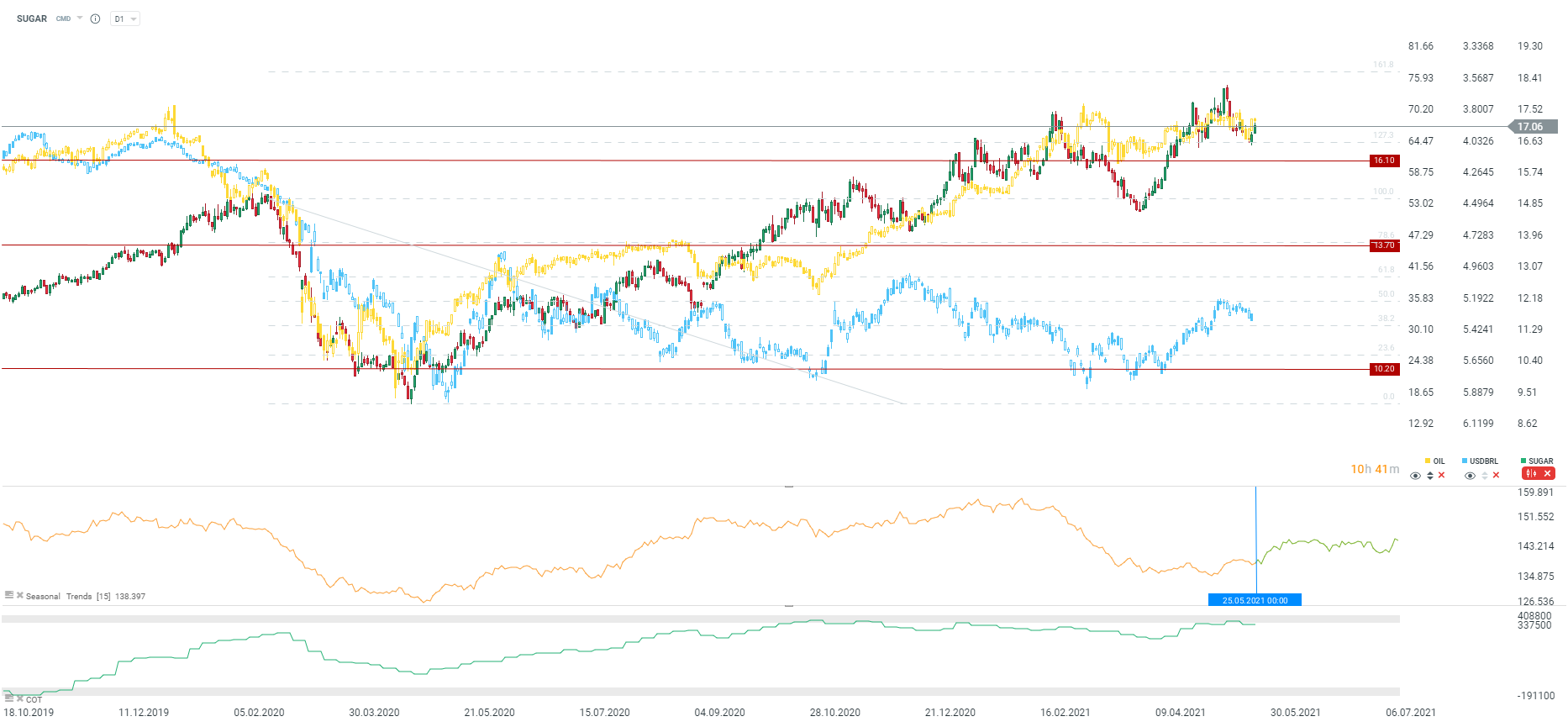 Sugar price is currently supported by the rebound in oil prices. At the moment, most of the fundamental factors are priced in, so the future behavior of oil and the dollar may be crucial for the price of this commodity. Source: xStation5
Sugar price is currently supported by the rebound in oil prices. At the moment, most of the fundamental factors are priced in, so the future behavior of oil and the dollar may be crucial for the price of this commodity. Source: xStation5
This content has been created by XTB S.A. This service is provided by XTB S.A., with its registered office in Warsaw, at Prosta 67, 00-838 Warsaw, Poland, entered in the register of entrepreneurs of the National Court Register (Krajowy Rejestr Sądowy) conducted by District Court for the Capital City of Warsaw, XII Commercial Division of the National Court Register under KRS number 0000217580, REGON number 015803782 and Tax Identification Number (NIP) 527-24-43-955, with the fully paid up share capital in the amount of PLN 5.869.181,75. XTB S.A. conducts brokerage activities on the basis of the license granted by Polish Securities and Exchange Commission on 8th November 2005 No. DDM-M-4021-57-1/2005 and is supervised by Polish Supervision Authority.
